In a previous post, Anne Dubos gave a short introduction to Kalaripayattu practice, a martial art of Kerala. What follows is an interview with fancing master (Gurukkal) Sathyan Narayanan Gurukkal which she conducted at the CVN Kalari, East Fort, Trivandrum. The discourse of Sathyan Narayanan present various ways of mastering the gaze and addresses issues of balance and concentration. The issue of ‘centering’ on an axis (a self connected to a cosmos) refers to the broader tradition of Asian martial arts, a tradition based on Buddhist practice of meditation.
We are doing a study at the Lutin Userlab, Cité des Sciences et de l’Industrie, Paris on ocular movements. We are interested in how people fix their gaze or move their eyes during performance and exercises. This is why we are using an eye tracker: it allows us to record eye movement in details, and understand how you fix your gaze. What is the importance of the gaze in your practice ?
Actually, the whole concept of Kalarippayattu is the training of two persons, it is based on eye contact: how the eyes are working.
I do not know whether that is there in other martial arts. But is there some kind of a traditional system, where, for example, when someone punches you, you look at the punch and then defend. In traditional kalari, you are never looking at the punch, you are just looking at the person.
I do not know if you are familiar with that: In kalari at first, you have the self-training, where you do the body practices yourself , and then understand the movements. And then you progress through the weapons training. Weapons are again tools to interact with the two persons and in the process of training; you have two sides: The western side, for the teacher, and the eastern side for the student. And when the teacher starts playing the student, the first time he will teach like that: just maintain focus on the eye, do not look anywhere else, and just follow.
So, for example, the teacher stays first, and then the student moves backward into that. And then he comes forward, he has to move back. Everything happens through eye contact. If there is any scientific reason for that, that would be also really interesting for us to know.
There are some neurological studies looking at the fact that when you fix something, your perception of time slows down. Fixation should help you to face any kind of surprise or action. What do you think about that?
In the kalari practice — this is actually something accomplished in practice, rather than technically taught — but the principle is to be fully focused on the eye only. But you can also see this thing: when the eyes lose contact, you have a gap. That gap is exactly what we need. The person is looking at your eye and you are there and you do not really have a gap.
All is happening when you are looking at the eye, the moment when the other person, mostly the western, the student side, when he has lost eye contact then you can see that there is a gap. That is exactly how you can connect to the other person: The mind should come prior to the body.
So you have some kind of mind game, in this eye contact. I do not see it emphasized much in some other traditions but in kalarippayattu, this is very much there.
Raja said that you had to look straight, as if you were a lion; is there any idea such as facing a lion?
Yes, this is exactly the posture of the eye. See exactly, you are in contact. The moment you are in contact, you are locked with the other person, and this happens throuhout the process.
Is it a means to balance the body? I wonder if the eye could play the role of a tale. Maybe if you stare at one point it is to help you keep balance?
Yes, exactly! Because in the self-training, you are always looking in front of you. Then, for example, when you make a turn, your eyes help, then you come inside.
There is also the sloka, in the Indian dance tradition. Have you heard about that sloka from the Natyashastra? It is talking about the eye:
Where your hands travel, follows your eyes
Where the eye follows the mind goes
Where the mind goes, there goes the bhava, the feelings
The final flavour of the whole acting comes from there.
So first the hands, then the eyes, then the mind, then the bhava, then the rasa.
In kalari, for example, if you want to move from this position to there (shows the serpent move), if your eyes are there and your eyes are not moving, your body will get stuck. Do you think it is correct? I do not know because for example, you want to move backward, and you say that you are trying to move and you make this, and this, and you make it a little easier (shows a turning movement). And if you want to completely change you need your gaze to reach there. And if you want to do from here to there, then your eyes have to go down.
In kalari, as you go down you are still looking at that person and then you go in and then go to the person. So I think the eye helps, in moving, in directing yourself…
I have another question concerning the size of the kalari: It is always built in small proportion. Does keeping contact with the walls helps you? Or does it give you a better sense of space?
That is true. Because kalari is more like an enclosed space, but not like a very open hall, it has to have that. And because in kalari techniques, you always have to wait to the space: two persons standing. One person is standing on the other side, and you have to maintain your body. And you have something like an equal, corresponding move.
That is very important in the training on the student side. The training is essentially to get this: body mind link.
People start training in the martial arts, to feel they have a weapon in their hand, but actually in kalari what happens is that there is one feeling, and you have a weapon, you are like this (showing the lion step), but the reason you have a weapon in your hand, or the other person has a weapon, you should not be concerned by this: you should not be concerned by security.
You know, people start to feel insecure because they have a weapon “I have to react to the weapon, the weapon might hurt me”, something like that. So, the first teaching in kalari is: Your weapon is there and you are locked to the other person, you don’t have to feel insecure.
The whole process is just about training. So you train through all the sequence so you should be aware of the space: someone can come inside and all your body has to find balance. For example, you have the feet, so the body can move anywhere you want. The body is very flexible, because the body is really centred. In kalari practice all that happens, because in the centre, the body becomes very fluid so you have a very free space to move so that you can easily move back, but there is no sudden feeling of insecurity. The moment the weapon is there, the mind reaches a God Govind stage. Slowly training, going through the sequences, it becomes very cyclic, very centred. The eye become means: the body becomes all eye… this is what I understand.
Then the space between the two persons has to be maintained. They do not move away from each other too much. When one moves to the side, the other has to follow. We need to keep the centre very active. So that it is almost like two persons standing, the navel, we call the nabhi mulla, you know the word? It is the centre of the body, so that point is connected. The eye and this point have a connection. So whenever you make a move, the other has to make a corresponding movement. This is how it goes.
The way you describe it, it is more like constantly adjusting your movement with the other person?
I always consider kalari with something to do with all techniques of the root training tradition; like all body and mind focuses. This is just something that is never considered by many people. But I believe the mind is very alert because of the eyes. And I think with the tools, the same things happen.
When you isolate all the security concerns, you also create a kind of slow awareness for what goes around you. And this time, when you come close to the wall you have that space, you can make a movement, all that happens.
But during the fight, the real fight, would you follow the same rules, or?
I do not know what would be the case in a fighting situation, like free fighting. Because we do not do that kind of fighting. But I think when we observe somebody like us I think if you have a correct eye contact, which relates you to another person then you gain power because you get a good sense of timing and space. Everything comes from that. In traditional training it is more like choreographic work: you have a sequence to follow. The sequence is already qualified. But there are some spaces that are free. You can look at the sequences and then there are some sequences where the spaces are free.
So you can see the gap and take it through to other movements and eventually you can come back. Then you can remember any numbers of blows and anything, then you are just standing with the weapon and you can do it like this, like this. What he is going to do, next movement from the eyes you get. You are not getting it from anywhere else. When you come to a fight like this, from the eyes you know whether he will hit you or whether he will strike you.
But what can you see? Is it a question of intensity? Do you think that the eyes move forward?
That we have to see whether it is … the emotion that is showing the eye? Is that what you are asking?
Yes.
Then the emotion is what happens just before fighting. The mind goes through the eye. Small changes happen in the body, there is a forward movement that is happening in backward movement, which means to advance fast. All that we can say…
When we see the people training, they are very focused…
What happens, I would say is that eyes are like a tool, for example: you have a standing posture like this, so when you go to the left, it is a simple switch, so when the leg comes down, the hands come up, and the eyes follow, and when it comes to the turning point, if the eyes stay there it won’t work; the eyes have to really help the body so it will all get down, and then go to another point.
So when you have a full exercise, that time when you want to straighten the body, you can never do that with the eye block, you have to let the eye go. Once it reaches there, the eye has to bebrought back inside. You cannot leave the eye completely open like that. When you have someone in front you have also the mechanism. In fact no : Sathyan is talking about the “body mechanism” created by the repetition and the training to do the complete movement.
And there is also a movement called chaadi movement in kalari, there is some really good connection you can observe with the eyes, for example you have this movement here, the coq, and you are supposed to look inside a soul when you lift. In the verbal command it says “edatte eduttu nooki” when you translate, it means “look at the other person” but actually, you are supposed to look “inside of a soul”, that is what it says. Inside means there is something that happens when the body is there, and when the body and the centre is well balanced, there is something to happen; then put your leg down, after the feet is down, after the chaadi movement then you slowly get down, first and then raising and when you are there you are slowly gett up, and then to the body and then up.
All this happens after the eye, and if the eye is not going a little out, the character of this movement will change. It is very closed to the spine movement like this, it will change like this (showing the move). So here after the jump you lock your hands (showing chaadi movement), you’re going to move your eyes after the hand, and follow the hand with the eyes. And the eyes will guide it to reach it.
Is there anything that changes in your life when you are practicing Kalari? Do you think that when you learn kalari, your perception of time and/or space, will change?
My feeling is that every change comes from that tradition and it is different from other forms. Kalari was never been meant to train warriors. It is a training system for the mind and body where as a child, you are introduced to the system and where you are not taught any aggression: you are not taught to fight, you are just doing a set of exercises. And because the exercises themselves are related to the inner body, there is an inner balance into the body, an inner line.
With or without knowledge you are connected to that, so that gives you some stability and feeling of compassion. That feeling is, I think, based on the understanding of the inner self. Once you reach the inner self, you are calm, you are ready for any situation, your mind is stable.
That is what eventually all Indian philosophy teaches. I think kalari also ultimately does that. You are in the kalari, you are not pumping muscles to become a body builder or concerned about the external body but you are more concerned about what happens, how the body breathes. With Kalari, the person is meant to become more settled. You won’t get disturbed, you won’t react in any situation, you will react in a sensible way.
Actually the teacher teaches you that: whether you want to become, with this knowledge, a warrior, or a doctor, or a carpenter, it is up to you. But all that time, that element of mind-body union, once it is there in the body, you can use it effectively, that is what it is made for. That is why the student in the kalari uses what he has practiced in his everyday: applying oil and then going to work. With kalari, you are not fighting or doing anything too hard on your body.
Thank you, I think now we are have “a lot” to think about…
I will be very happy to see your conclusion after all that. I always say that kalari is all about what is happening inside, not about what is happening outside. If you lose that, then you will lose everything…



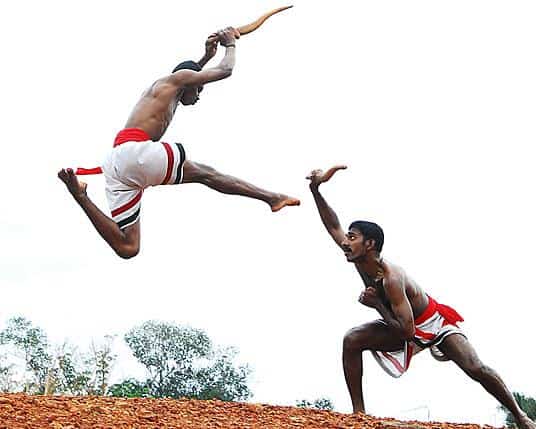






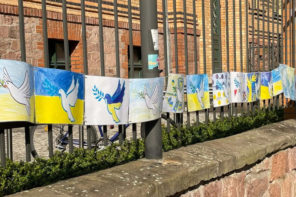
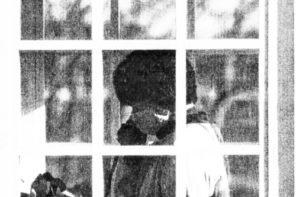
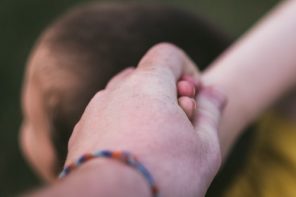
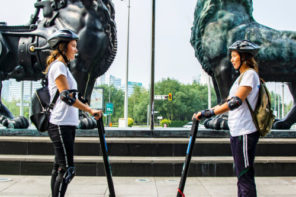
I’m just so astonished because of how insightful and soulful it is and this is one of many things from India i love. Deep philosophical and understanding of many things from their meaningful spiritual way that can be applied IRL. Thank you for sharing 🙂